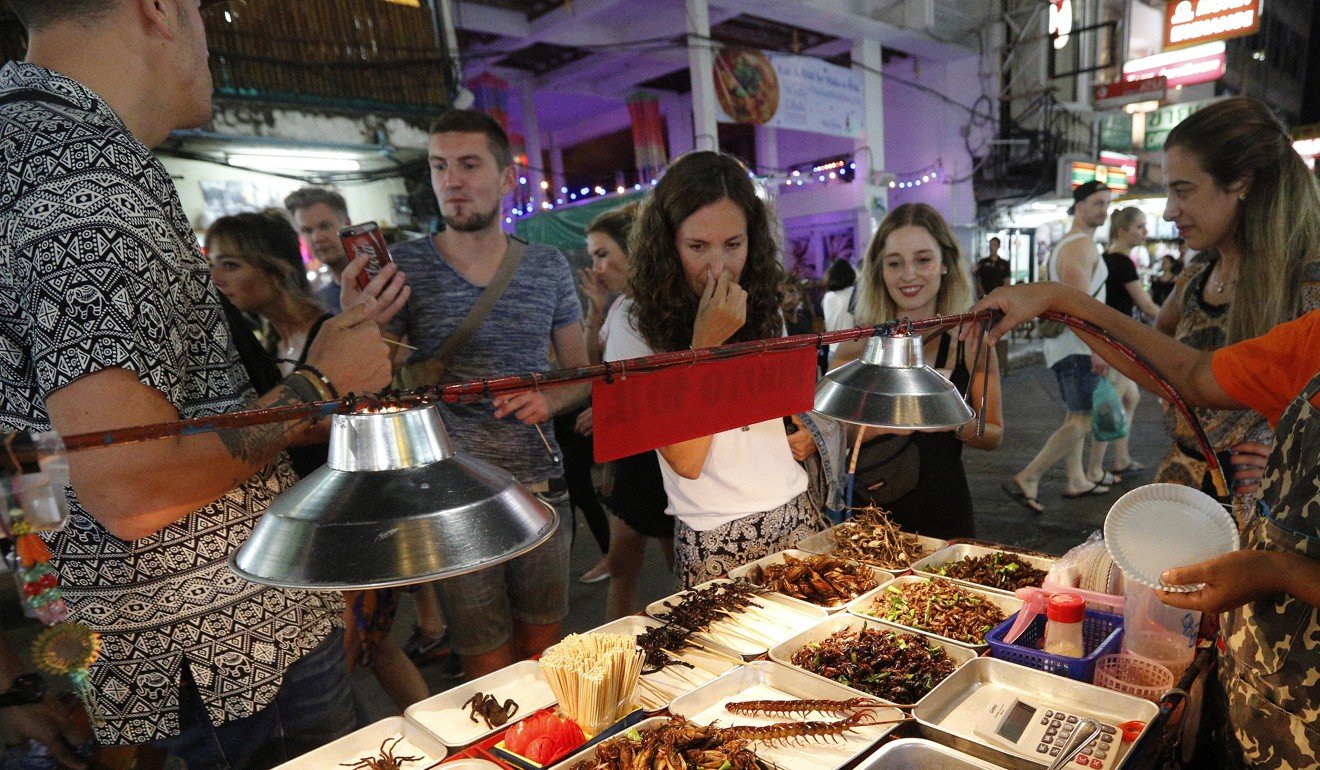
Bangkok’s Khao San Road is getting a US$1.6 million makeover to clean up backpacker ghetto
- The street in Thailand’s capital is known for being a destination for travellers in Southeast Asia
- Its party atmosphere and cheap eats, bars and guest houses were immortalised in 1996 novel The Beach
In 2000, American journalist Susan Orlean wrote in The New Yorker: “All languages are welcome on Bangkok’s Khao San Road, including Drunkard.” And nothing much has changed in the 19 years since. Tourists, most of them young, many fresh off their first long-haul, discard their inhibitions, control and, sometimes, dignity, as they progress along the 410-metre stretch, trading baht for beer in plastic cups and barbecued insects.
But perhaps not for much longer. According to a July 22 article in the Bangkok Post, city officials have allocated 48 million baht (US$1.6 million) for a five-month revamp of the rough-around-the-edges destination. Work is expected to start in October, and will involve rezoning vendors who peddle their wares along Khao San, raising the road surface to meet the pavements, which will all be repaved with granite, as well as a spot of landscaping. Thailand’s public broadcasting service, Thai PBS, reported that the street’s 240 stall holders will be organised according to what they sell. Static vendors will be permitted to trade from 9am to 9pm while pushcarts selling drinks, fruit and food, a roadside staple in the city, will no longer be allowed to trundle down Khao San.

The aim of the upgrade, according to Thai PBS, is to turn the “tourist mecca” into a “full-fledged tourist attraction”, although it is not the first attempt at “improving” one of Bangkok’s most visited streets. For much of last year, authorities were all set on “cleaning up” the area, but a failure to consult any of the street’s traders saw plans reach an impasse and proposals pulled.
They say you can’t polish a turd, and nor should you want to. Leave Khao San Road for those who want it as it is, there’s plenty of Bangkok to go around.
Garuda Indonesia tries to ban in-flight photos

Garuda Indonesia, the archipelagic country’s national airline, doesn’t want passengers posting pictures from its flights any more. You might assume that the picture prohibition has been proposed for security reasons but no, it’s actually to save the airline from any further embarrassment after an influencer shared a snap of a handwritten menu that had been passed to him in business class on a recent Garuda flight.
Rius Vernandes, an Indonesian travel vlogger, posted the image, taken on a July 13 flight from Sydney to Denpasar, to his Instagram, and, much to Garuda’s displeasure, it went viral. The airline responded with a circular banning all in-flight photography, which was later revised to say that pictures and videos were allowed as long as they didn’t infringe on the privacy of other passengers and crew.
Vernandes followed his original Instagram post with another, showing two brown envelopes from the police in which were notes informing him that Garuda had reported him and his fiancée, who he had been travelling with, for defamation. However, the airline then dropped the charges, instead handing the vlogger a first-class ticket and asking for more honest feedback.
We wonder whether first-class passengers are given handwritten menus, too.
Uncle Ho’s embalmed body is in ‘great shape’, says Vietnam

Thousands of people visit the Ho Chi Minh Mausoleum, in Hanoi, every year to have a look at Uncle Ho, who was embalmed against his dying wishes. He, like China’s late leader Mao Zedong, expressed a desire to be cremated.

